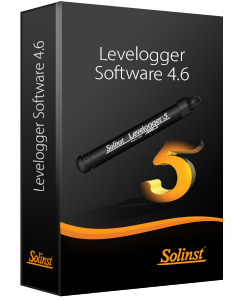The Datalogger Information window includes Datalogger Serial Number, Well Location, Altitude and Density Adjustment (Levelogger Gold models only), Sample Rate, and Memory Mode Selection.
If you do not require independent logging, select ![]() and the RRL Station will only collect a real-time reading from the datalogger at the scheduled Sample Rate. There is no need to enter a Sample Rate.
and the RRL Station will only collect a real-time reading from the datalogger at the scheduled Sample Rate. There is no need to enter a Sample Rate.
If you want your datalogger to record and store readings in its internal memory, independent of RRL operation, fill in the Sample Rate and Memory Mode Selection fields, and select ![]() if independent logging has been stopped.
if independent logging has been stopped.
- Serial Number: Your datalogger Serial Number will display after the System is started.
- Well Location: Input specific site / location information.
- Density Adjustment: (Levelogger Gold models only) Is used to adjust the range of the datalogger based on the sample fluid density. The range for the density adjustment is from 0.9 kg/L to 1.1 kg/L. Uncheck the Density Adjustment field to disable the Density Adjustment function.
- Altitude: (Levelogger Gold models only) In feet or meters above sea level, at which the logger is actually deployed, is input in the altitude field. Water column equivalent pressure decreases with altitude at a rate of approximately 1.2:1000 in the lower atmosphere below 5000 m. You can compensate for this by entering an elevation between -1000 ft below sea level and 16,400 ft (or -300 m and 5000 m) above sea level. The readings will then be automatically compensated for elevation.
- Sample Rate: Is linear. Linear refers to a set time interval between collection of readings. The default sample rate is set to 15 minutes.
- Memory Mode Selection: There is a choice of Continuous Logging (wrap around) or Slate Logging. In Continuous Logging the new log is started at the end of any previous log and continues logging, eventually recording over the first logged data. As one of the download options is to 'Append Data', Continuous Logging can be a preferred choice when logging long-term. In Slate Logging the new log is also started at the end of any previous log, but will stop recordings when the memory is full, so that the beginning of the current log will not be written over. Rainloggers record in Slate mode only.
Note:
The Levelogger Edge, Levelogger Junior Edge, LTC Levelogger Edge and Barologger Edge can be adjusted for Altitude and Density post data collection using the Data Compensation Wizard in the Levelogger Software.
Note:
In Slate Logging, the datalogger will stop recording readings after its memory is full. Therefore, Continuous Logging is recommended for long term monitoring applications.
Please refer to the chart below for a summary of the available sampling and memory options for each datalogger type (See the Levelogger User Guide for older Levelogger Gold Models).
| Datalogger Programming Options | |||
|---|---|---|---|
| Datalogger Type | Linear Sampling | Memory | Battery Life |
Levelogger Edge/ Barologger Edge |
0.125 second to 99 hours | 40,000 sets of readings in Slate or Continuous Mode | 10 years based on 1 reading per minute |
Levelogger Junior Edge |
0.5 second to 99 hours | 40,000 sets of readings in Slate or Continuous Mode | 5 years based on 1 reading per minute |
LTC Levelogger Edge |
2 seconds to 99 hours | 27,000 sets of readings in Slate or Continuous Mode | 8 years based on 1 reading every 5 minutes |
Rainlogger Edge |
Event Based (records tips from tippingbucket rain gauge) | Up to 60,000 tip time logs in Slate or Continuous Mode | 10 years based on 2 parameters logged every 10 minutes |
LevelVent |
0.125 second to 99 hours | 40,000 sets of readings in Slate or Continuous Mode | 10 years based on 1 reading per minute |
AquaVent |
0.125 second to 99 hours | 40,000 sets of readings in Slate or Continuous Mode | 8 years based on 1 reading per minute |
Table 4-1 Datalogger Programming Options
Note:
If you are programming a number of dataloggers with the same settings, select "Save Settings" after programming the first datalogger. Select "Load Settings" when starting to set up your next datalogger to apply the saved settings.




